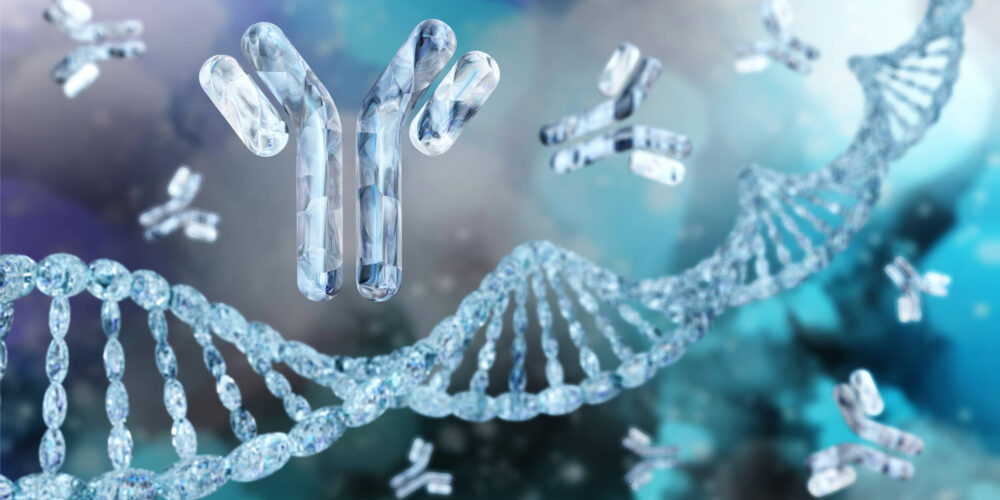Introduction
The Ames test assesses the mutagenic potential of a compound. Ames testing uses strains of the bacterium Salmonella typhimurium which carry a defective (mutant) gene that renders them unable to synthesize the amino acid histidine. The Ames test investigates the potential of the test compound to result in a back mutation that causes the gene to regain its function and grow in a histidine-free medium.
Mutagenic potential can be investigated in the Ames test in the presence or absence of a metabolizing system (e.g., Aroclor 1254-induced rat liver S9 fraction) to identify pro-mutagens as well as directly acting mutagens.
TA98 (frameshift mutation) and TA100 (base-pair substitution) are two common strains of Salmonella typhimurium strains assessed in Ames testing. Both strains have:
- rfa mutations, a defective lipopolysaccharide layer that makes bacteria more permeable to larger molecules.
- uvrB mutations, which eliminate excision repair of DNA damage.
- the pKM101 plasmid, which increases error-prone repair of DNA damage.
Protocol
Mini Ames Test (TA98/TA100) Assay Protocol
Data
Data for Mini Ames Test (TA98/TA100)
Q&A
What bacterial strains do you assess and why?
Cyprotex offers the Ames test as an early stage assessment of genotoxicity using a miniaturised screening version which requires less compound and evaluates two of the most common mutations, TA98 and TA100.
TA98 (frameshift mutation) and TA100 (base-pair substitution) are two common strains of Salmonella typhimurium strains assessed in Ames testing. Both strains have:
- rfa mutations, a defective lipopolysaccharide layer that makes bacteria more permeable to larger molecules
- uvrB mutations, which eliminate excision repair of DNA damage
- the pKM101 plasmid, which increases error-prone repair of DNA damage
Why is it important to investigate mutagenicity of compounds?
Compounds that have been demonstrated to induce genetic mutations, chromosomal breaks, and/or rearrangements are considered genotoxic and have the potential to cause cancer in humans. In some cases it is not the compounds themselves that are genotoxic, but impurities generated in the manufacturing process; thus it is important to identify and test these impurities as well as the compounds.
Please provide an overview of the Cyprotex Ames test MPFTM mutagenicity assay.
We typically perform six concentrations with a top concentration of 2mg/mL depending on solubility constraints. The bacteria are exposed to the chemicals in the presence and absence of aroclor-induced rat S9. For the S9 incubations, an NADPH-regenerating system is also included. Exposure is over 90 min in medium containing sufficient histidine to support two cell divisions. The cultures are then diluted into pH indicator medium lacking histidine, and incubated for 48 hr. Cells that have undergone a reversion will grow in the well, resulting in a colour change during growth. The number of wells containing revertant colonies are counted and compared to the vehicle control.
What controls are included in the Ames assay?
Positive controls are known mutagens 2-nitrofluorene and 4-nitroquinoline-N-oxide for the assay without S9 and 2-aminoanthracene in the assay with S9. The negative control is the appropriate vehicle control.
What are the regulatory requirements for genotoxicity assessment?
Many different industries rely on genotoxicity testing for safety assessment of their products. These include the pharmaceutical and veterinary industries, the agrochemical and chemical industries, medical device industry and the cosmetics and personal care industries.
For the pharmaceutical industry, the general features of a standard test battery for regulatory genotoxicity studies include the assessment of mutagenicity in a bacterial reverse gene mutation test (e.g., Ames test) and the assessment of genotoxicity in mammalian cells in vitro and/or in vivo.
Two options are proposed in the 2011 ICH guidance S2(R1)2:
Option 1
- A test for gene mutation in bacteria.
- A cytogenetic test for chromosomal damage (the in vitro metaphase chromosome aberration test or in vitro micronucleus test), or an in vitro mouse lymphoma Tk gene mutation assay.
- An in vivo test for genotoxicity, generally a test for chromosomal damage using rodent hematopoietic cells, either for micronuclei or for chromosomal aberrations in metaphase cells.
Option 2
- A test for gene mutation in bacteria.
- An in vivo assessment of genotoxicity with two different tissues, usually an assay for micronuclei using rodent hematopoietic cells, and a second in vivo assay. Typically this would be a DNA strand breakage assay in liver, unless otherwise justified.
For compounds that give negative results, the completion of either option of the standard test battery, performed and evaluated in accordance with current recommendations, will usually provide sufficient assurance of the absence of genotoxic activity and no additional tests are warranted. Compounds that give positive results in the standard test battery might, depending on their therapeutic use, need to be tested more extensively.
In cases where compounds are highly toxic to bacteria (e.g., some antibiotics), the bacterial reverse mutation (Ames) test should still be carried out, just as cytotoxic compounds are tested in mammalian cells, because mutagenicity can occur at lower, less toxic concentrations. In such cases, any one of the in vitro mammalian cell assays should also be done, i.e., Option 1 should be followed.
For other industries (e.g., chemicals, pesticides and personal care products), the testing requirements and guidance tends to be country-specific. However, most industries have in vitro testing as the first stage in the testing battery for genotoxicity assessment, and typically this includes 3 tests covering 3 different endpoints. Further animal testing may be required for those test articles which are identified as genotoxic in the in vitro assays. However, in the cosmetics and personal care industry, animal testing is banned in many countries and so there is a total reliance on in vitro testing or other non-animal alternative methods.
References
1) Mortelmans K and Zeiger E. (2000) Mutation Research 455; 29-60
2) ICH guidance on genotoxicity testing and data interpretation for pharmaceuticals intended for human use S2(R1) November 2011

